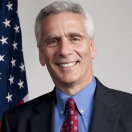
An opinion piece by David Brooks in today’s New York Times reminded me of the old adage, “everyone has a right to their own opinion, but not to their own facts.”
Particularly in regard to the Recovery Act, Brooks gets the facts wrong and in so doing, presents a misleading picture of where we’ve been, where we are, and what the best next steps should be.
Jobs Saved or Created: Brooks cites a model that “suggests the stimulus will create about a half-million jobs.” That’s demonstrably wrong based on Recovery Act recipients’ own reports, and way off the consensus of outside estimates. Each of these facts is, btw, a mouse click away.
For example, click here and learn that according the Congressional Budget Office, the nation’s premiere, independent, nonpartisan scorekeeper, as of the first quarter of this year, the Recovery Act saved or created as many as 2.8 million jobs.
The CBO evaluates the jobs created by the full scope Recovery Act programs, from direct spending on road projects, to teacher-job preservation, to tax cuts, and so on. But there’s another source worth examining here: recipient reporting on Recovery.gov. Click on the link and you will see the number 681,825. These are the number of jobs reported by a subset of Recovery Act recipients, those whose jobs came through direct spending (missing, for example, jobs created by tax cuts or jobs created indirectly through spending by direct beneficiaries).
Note two things about this number: first, it reflects jobs created or retained with less than a fifth of the Act’s spending, and second, even though it only covers a small part of Recovery Act spending, it’s a lot higher than “half-a-million.”
Brooks may have objections to these facts, but it is misleading in the extreme to simply omit them.
Brooks then incorrectly cites the work of economist Ed Glaeser to suggest that there’s no relationship between stimulus spending and job creation. Glaeser finds nothing of the sort—the raw relationship Glaeser reports is that unemployment has risen less where the stimulus was larger (see here for a discussion of Ed’s work). I spoke to Ed this morning and he certainly believes the stimulus created jobs in states across the country.
Current Conditions: The other lynchpin of Brook’s argument is the fact that in the last jobs report, of the 431,000 net jobs created in May, only 41,000 were private sector jobs. In March and April, however, the number of private sector jobs created were 158,000 and 218,000, respectively. Every economist who follows these numbers knows they bounce around, so cherry-picking one month to make your case is just bad analysis (see here for a gaggle of economists making this important point). Presumably, Brooks wouldn’t have made this point last month, and it’s implausible that the stimulus worked in April but not in May.
The average of private sector job growth over the past three months has been about 140,000 per month. One year ago, that same average was negative 575,000…per month! Over the past three months, we’ve gained over 400,000 private sector jobs. Over that same period last year, we lost 1.7 million.
Economists across the spectrum widely agree that the Recovery Act played a key role in that reversal. Mark Zandi, one of the most frequently cited economists in America (and an economist who previously advised the McCain campaign), called the Recovery Act “the catalyst for the transition from recession to recovery.”
We know we have a long way to go before working Americans once again have the economic opportunities they need and deserve, and the President is working aggressively to build off of the momentum described above. But we can’t effectively plan next steps if we fail to objectively and factually evaluate where we’ve been.
Jared Bernstein is Chief Economic Advisor to the Vice President


